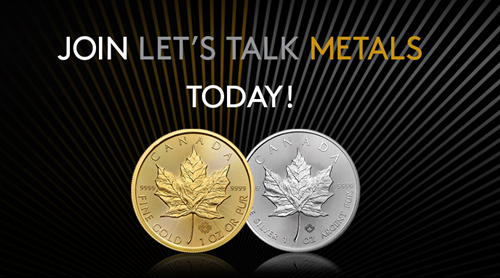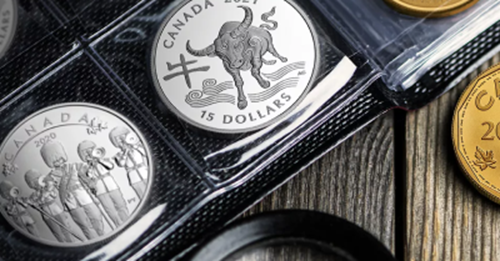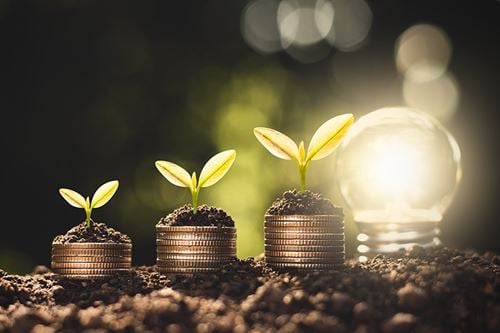What Makes it Precious: Silver
- Jul 16, 2023
- Learn
- 7 minute read
The most versatile of all precious metals: silver. Through its unique combination of beauty, industrial utility and antibacterial properties, it has been one of the most coveted and sought-after elements for millennia. Much like gold, silver has been used as both a store of wealth and a form of currency — but has much broader industrial applications.
If you’re looking to embark on your loveSILVER journey and start investing in silver bullion, keep reading to learn more about what makes it such a precious metal.


Serial numbers are individually engraved on 100oz silver bars at the Royal Canadian Mint.
The most versatile of all precious metals: silver. Through its unique combination of beauty, industrial utility and antibacterial properties, it has been one of the most coveted and sought-after elements for millennia. Much like gold, silver has been used as both a store of wealth and a form of currency — but has much broader industrial applications.
If you’re looking to embark on your loveSILVER journey and start investing in silver bullion, keep reading to learn more about what makes it such a precious metal.
THE HISTORY OF SILVER
Billions of years ago, passing meteorites embedded silver in the earth’s crust. Silver is typically found as a compound with gold or copper. As such, nearly half of the silver produced today is a secondary product when processing other kinds of ore.
Silver has been cherished by civilizations across the globe since it was first mined in Turkey some 5,000 years ago. Because of its high value, silver has been used in jewellery, tableware and figurines, as well as objects for religious rituals. Textiles were embroidered with silver thread, and it was also widely used as an inlay material for weapons, armour, furniture and metal vessels.
But silver’s applications go beyond crafting beautiful ornaments. During the time of the Ancient Greeks, silver became the metal of choice for currency. In the 6th century BCE, the first Athenian tetradrachm was minted: a large silver coin used to pay the weekly wage of a skilled labourer or soldier. It was the first mass-circulated coin, spreading beyond Greece’s borders to become the standard coin of the ancient world. Visually, it featured two symbols carved in high relief: on one side Athena, the goddess of wisdom and warfare; on the other an owl, representing learning and knowledge. It was the prototype for the “heads or tails” design still used on coins today.
It was around the same time that silver’s antibacterial properties were discovered. Water, wine and vinegar were stored in silver bottles to prevent spoiling. And around 400 BC, the “father of medicine,” Hippocrates, wrote about silver’s germicidal properties and medical benefits, including its use to treat wounds and infections.
More recently, silver played a role in one of the most influential inventions of our time: photography. In traditional black-and-white photography, a silver-based emulsion created the light-sensitive film used to capture images. Due to silver’s superior reflective qualities, early movies were projected onto screens made of silver-coated fabric, improving the brightness and clarity of the image. To this day, the term “silver screen” remains synonymous with the movie industry and the glamour of Hollywood.

WHY SILVER STILL MATTERS TODAY
Silver continues to play a significant role in scientific research and technological uses, including:
- Electronics: Due to its superior conductivity, silver is perfect for coating contacts on circuit boards. Virtually all computers, phones, cars and appliances contain silver. Its excellent conductivity and reflectivity also boost the efficiency of solar panels and photovoltaic cells, making it key to renewable energy initiatives.
- Car manufacturing: Silver is used for a wide variety of applications in the automotive sector, including electrical switches, sensors and fuses. Its unique physical and chemical properties also make it an ideal component in green energy applications, including the production of hydrogen fuel cells and electric vehicle batteries. Silver helps increase the batteries’ efficiency and performance, allowing them to store more energy and provide longer driving ranges.
- Medicine: Building on Hippocrates’s earlier observations, silver is now an active ingredient of creams and dressings used to treat burn injuries and skin ulcers. Silver nanoparticles have antimicrobial properties, damaging cell walls of bacteria and other harmful microorganisms, preventing their replications. With more and more bacteria becoming resistant to antibiotics, researchers are turning again to silver to prevent and treat infections.

WHY PEOPLE INVEST IN SILVER
Silver has been used as a form of currency and a store of value for centuries. Historically, investors have recognized silver’s intrinsic worth and have used it to diversify their portfolios.
Unlike other metals such as copper or iron, silver is relatively rare and found only in low concentrations in the earth’s crust. At the same time, the demand for silver has consistently been high due to its versatility in industrial and technological applications — making it both a scarce and traditionally highly valued resource.
The price of silver often correlates directly to industrial demand. While silver’s price movements have historically also been closely related to those of gold, analyses suggest the metal’s past performance has been comparable to traditional investment assets such as stocks, bonds and other commodities. Compared to gold, however, silver is lower priced, making it more accessible for investors looking to add precious metals to their portfolios.

WHY THE ROYAL CANADIAN MINT IS ONE OF YOUR BEST SOURCES FOR SILVER BULLION
The Royal Canadian Mint produces silver bullion coins and bars that are among the most secure and trusted in the world. Through the use of advanced engraving and laser marking technologies, we’re constantly pushing the boundaries of security features for bullion coins.
As the world’s top selling silver bullion coin in 2022, our silver bullion coins are globally recognized and accepted by dealers and investors alike for their guaranteed purity and weight. In 1988, we introduced the Silver Maple Leaf (SML): the first 99.99% pure silver bullion coin. With the global standard being just 99.9%, our silver coins are the most pure in the world. Plus, our unique MINTSHIELD™ technology reduces the appearance of naturally occurring white spots that can form on silver coins, which affect a coin’s aesthetic appeal and can bring down its perceived value later on.
Ready to start your loveSILVER journey?
© 2023 Royal Canadian Mint. All rights reserved. The information provided on mint.ca (the “Website”) is intended for informational purposes only and is not intended to constitute investment, financial, legal, tax or accounting advice, and you should not rely on the information in this section of the Website for such advice. Prospective investors in precious metals should directly consult their financial professional or other advisors before acting on any information on this Website. Precious metal investment may not be suitable for persons unfamiliar with precious metal markets, or unwilling or unable to bear the risk attendant to an investment of this type. Prospective investors should consider carefully before reaching a decision to invest in precious metals.
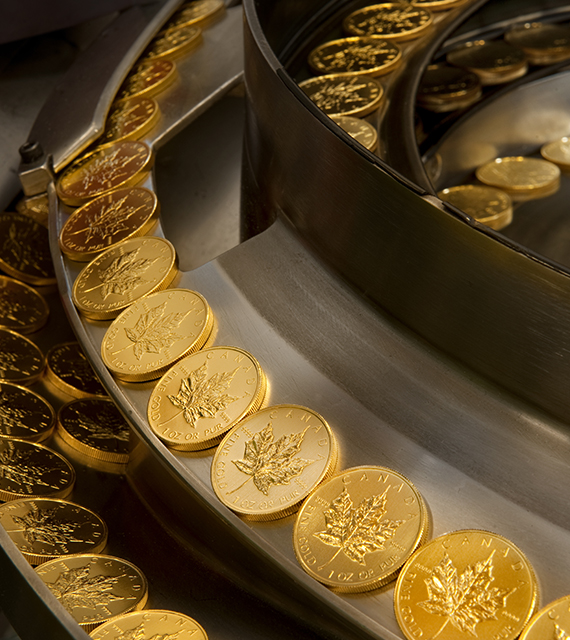

What Makes it Precious: Gold
What Makes it Precious: Gold
It’s the metal that has captivated humanity since ancient times: gold. For millennia, it has been part of our histories, our cultural expressions and our traditions. Cherished and alluring, gold has been used not just in jewellery and adornment but in the most daring, cutting-edge scientific advancements. And it remains an enduring symbol of wealth, prosperity and luxury. Keep reading to learn more about what makes it such a precious metal.
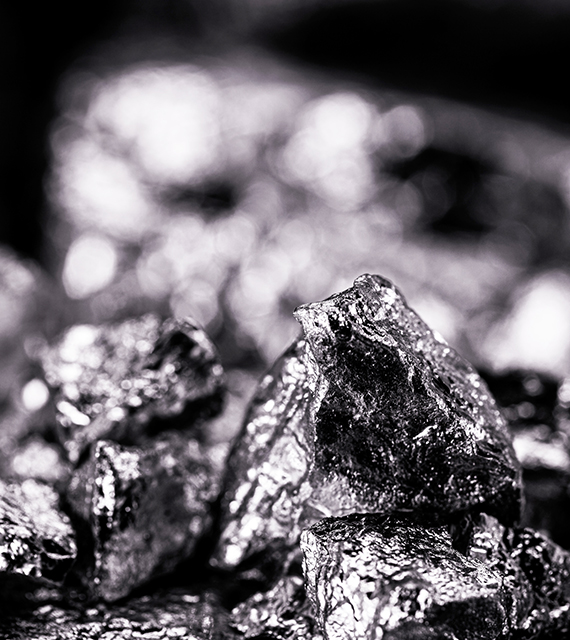

What Makes it Precious: Platinum
What Makes it Precious: Platinum
It’s one of the rarest of all precious metals: platinum. It is considered one of the most precious and exclusive metals, valued for its beauty and rarity: it’s 30 times rarer than gold! And with a melting point of 1,768 degrees Celsius, platinum is also much more durable than gold or silver, and highly resistant to tarnishing, corrosion and wear — making it a highly sought-after metal for jewellery, electronics, and industrial and medical applications. Keep reading to learn more about what makes it such a precious metal.

